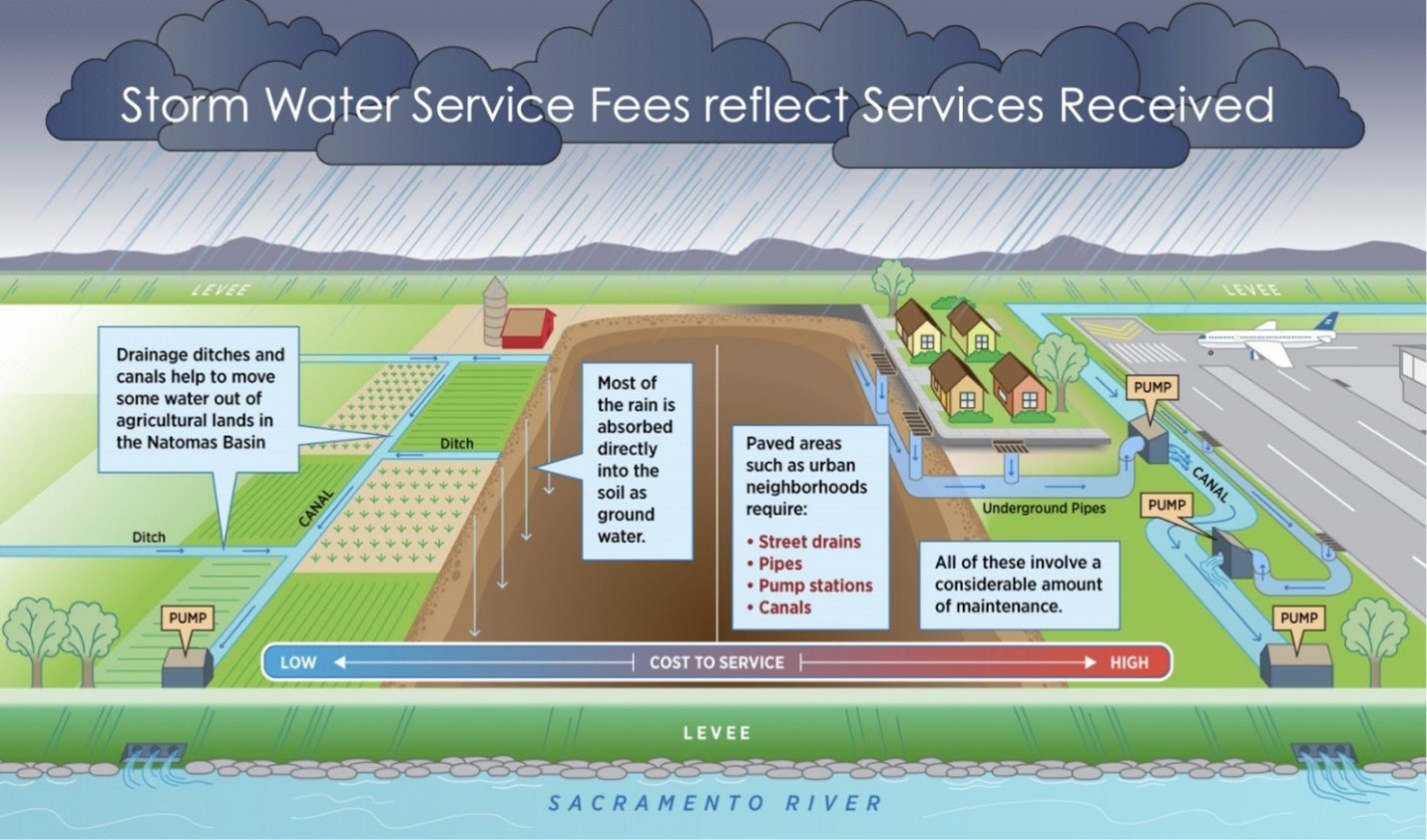4Natomas Stormwater Fee - FAQ
Unlike a lot of government projects, the community can see what the funding will be used for — fixing tangible problems with pumps, pipes, backup power, monitoring systems, and other infrastructure needs.
Our Commitment To Natomas
- Fully Transparent & Collaborative Process
- Fiscal Responsibility
- Fairness in Fees & Assessments
- Flood-Safe Future
- Face to Face Forums
4Natomas F&Qs
RD 1000 is proposing a new land-based charge to fund the continued operation of its interior drainage system, including infrastructure repairs and upgrades. The District’s interior drainage system collects stormwater runoff, seepage waters, and agricultural drainage and delivers them to the pumping plants for disposal into the Sacramento River or other adjacent creeks.
The 4Natomas Stormwater Fee will provide dedicated funding that provides reliable and ongoing annual funding to update it's interior drainage system and improve resilience for many years to come.
Recent events, including numerous heavy storms and flooding, have highlighted our District's aging infrastructure deficiencies.
The proposed Fee would fund the interior drainage system’s continued operation and maintenance, including:
- Maintenance of ditches and canals, including silt and debris removal to maintain capacity.
- Vegetation management within the canals, and mowing of the canals and interior levees to ensure flood safety and reduce fire hazards.
- Pump station repairs, operations, and replacement.
Funds collected under this fee would be used to provide interior drainage services in that system and for no other purpose.
The District's interior drainage system plays a crucial role in protecting property owners from the risk of flooding and maintaining a healthy environment. Our community’s stormwater infrastructure is extensive, but it is aged and needs upgrades to become a safe and reliable resource for the community in the years ahead.
Our interior drainage system is comprised of:
- 30 miles of main drainage canals
- 150 miles of drainage ditches
- 8 main pump stations
The District’s existing charge funding these activities has not increased since 1996, however, the costs of providing these services continue to rise.
The District’s most recent Capital Improvement Plan projects that the annual revenue needed to provide these services into the future will be an estimated $3.3 million. This exceeds the District’s current revenue streams.
The proposed Fee is needed to fund the continued operations and maintenance services for that system. Without these repairs or improvements, the interior drainage system cannot function effectively, resulting in increased risk of flooding and deterioration of District infrastructure.
When stormwater is managed effectively, it is channeled away from developed areas and safely into waterways or storage facilities, reducing the risk of flooding.
Pumping plant stations are used to move water from low-lying areas to higher elevation points, where it can be safely discharged into rivers, creeks, or other water bodies.
Levees are earthen or concrete structures that act as barriers to prevent water from overflowing into surrounding areas. The District has a 42-mile levee system that protects properties from being reclaimed by the Sacramento and American Rivers.
In the September 2022 Property Related Fee Study (Fee Study), the proposed fee would allocate the cost of providing the interior drainage and stormwater management services across parcels that receive the services based on their County-land use classifications and their DWR-calculated Impervious Surface Coefficient (ISC).
In this way, the District can ensure that each property bears a proportionate cost of providing the services. The total fees levied will not exceed the cost of providing services.
A detailed explanation of the fee calculation, together with supporting data, can be found in the Fee Study, which is available at www.4natomas.org, or the District office upon request.

